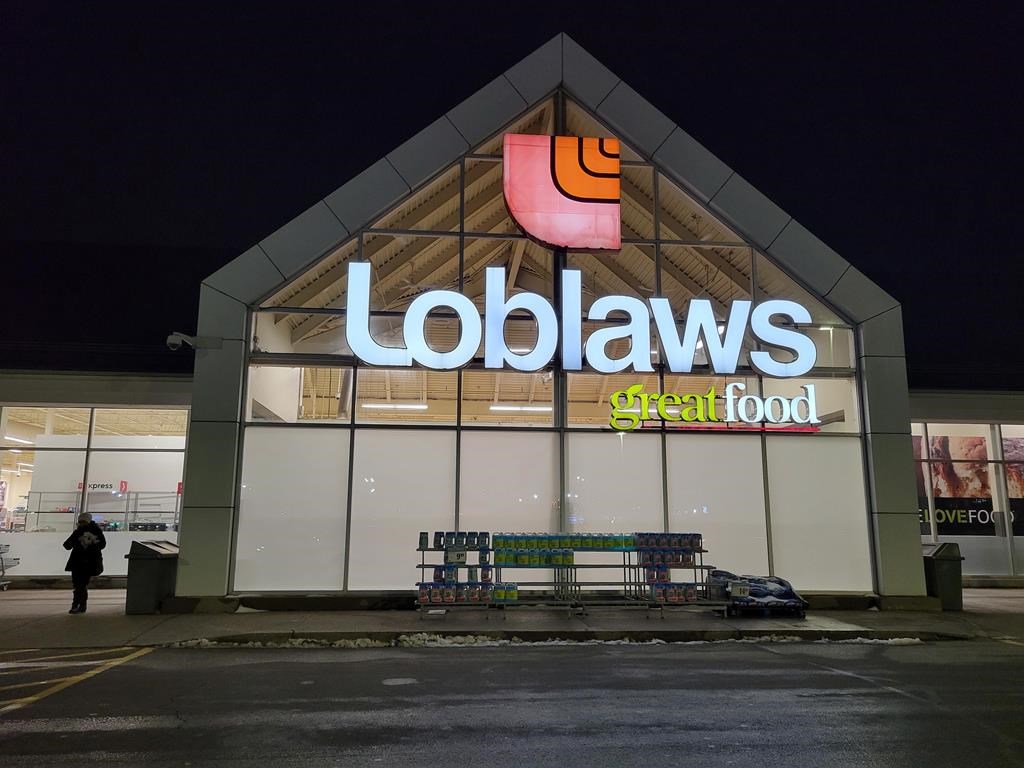
Need a bridge loan? Everything you need to know about bridge financing in Canada
PIC SNIPE / Shutterstock
Sometimes your closing dates on your current and new properties just don't line up. Fortunately, bridge loans can help "bridge" the gap between the two dates. Read on for the 411 on these useful short-term loans.
If you’re buying a home, you may have heard about bridge loans and wondered what they are and if you need one. If you’re a first-time homebuyer, this isn’t a financial product you need to consider. If, on the other hand, you’re currently a homeowner looking to sell your property and buy a different one, you could very well need a bridge loan in addition to a mortgage, depending on your circumstances.
That’s because when you buy a home in Canada, you must put down at least 5% to 20% of the purchase price in cash. If it’s your first home, that cash likely comes from your personal savings. But when you sell a home to purchase another one, you’ll probably want to use the equity in your current property to fund your down payment.
However, you need to sell your existing home before you can access that equity and the timing can be extremely tricky—especially in hot real estate markets where decisions must be made quickly. What if you take ownership of your new home before the sale closes on your existing home? Where will you get your down payment? That’s where bridge funding comes in.
What is bridge financing?
Mortgage bridge funding (aka bridge financing in Canada) is a short-term loan that’s separate from your mortgage. It “bridges” the gap between the closing dates of a home you’re purchasing and one you’re selling.
While buyers and sellers have traditionally tried to line up these dates—so that you relinquish the title on your old house and take ownership of the new one all in one day—that’s not always feasible. For example, the owner of the property you’re buying may prefer an early closing date, while the buyers with the best offer on your existing home ask for a longer closing period. Or, you may simply want to stay in your current home for a few weeks after taking possession of the new property so you can complete renovations before you move in.
Whatever the reason for the mismatched dates, the lag means you’ll have to come up with the down payment on your new home before you receive any money from the sale of your existing home. A bridge loan provides the financing for your down payment, with the understanding that you’ll repay the loan from the proceeds of the sale immediately upon closing.
How a bridge loan works
You can apply for a bridge loan with the same lender that’s underwriting the mortgage on your home purchase as soon as you have a firm sale date on your existing property. The amount of the bridge loan cannot exceed the equity value of your current home.
Before issuing the funds to you, the lender will get your real estate lawyer to sign an Assignment of Proceeds of Sale, a document indicating that the bridge loan will be repaid in full as soon as the sale of your current house closes. On that day, when your lawyer and the buyers’ lawyer settle the accounts, they’ll clear the bridge loan by paying your lender the full amount, plus interest accrued and any additional fees, from the sale proceeds.
How to qualify for a bridge loan
As mentioned above, you must have a firm closing date on the sale of your current home to qualify for a bridge loan from your mortgage provider, which means you need a signed contract from a confirmed buyer. If your mortgage provider doesn’t offer bridge financing, you’ll probably have to apply with a private lender—most banks don’t offer bridge loans as a standalone product because they aren’t very profitable compared to the risk involved.
Some private lenders may also provide bridge loans when there is no sale agreement, although the costs would be considerably higher.
Either way, you’ll have to provide a recent copy of the mortgage statement on your current home, so it’s clear how much equity you’ll be left with once the sale of the property closes. Assuming you have enough equity, your bridge loan will be equal to the down payment on your new home, minus any deposit you already paid when your purchase offer was accepted.
What does a bridge loan cost?
There are two types of fees involved with bridge financing in Canada: interest and administrative costs, as explained below.
Interest
The rate of interest on bridge loans tends to be higher than on mortgages or other forms of secured borrowing such as HELOCs because there is more risk involved for the lender. After all, there is a chance the sale of your home could fall through, leaving you struggling to repay the loan. As such, banks typically charge 2% to 4% over their prime rate, while private lenders charge even more.
On the upside, however, you aren’t paying interest on a bridge loan for very long, which helps keep the costs down.
Say you’re selling your current home for $500,000 and have an outstanding mortgage of $300,000 on that property. The closing date on the sale is 30 days after you take ownership of a home that you bought for $750,000. You plan to put down $150,000 (20% of the purchase price) to avoid the cost of mortgage loan insurance, and you’ll use your remaining equity to pay for renovations to the new property. You’ve already paid a deposit of $25,000, and your lender’s prime rate is 2.5%.
Here’s how you’d calculate the interest charges on the bridge loan:
- Bridge loan amount: $125,000 ($150,000 down payment – $25,000 deposit)
- Interest rate: 5% (prime + 4%)
- Cost of interest per day: $22.26 ($125,000 loan x 6.5% annual interest ÷ 365 days)
- Total interest charges: $667.80 ($22.26 interest per day x 30 days)
Administrative fees
As shown above, the short-term nature of bridge loans means lenders don’t earn much interest on them. To help cover their administrative costs, they charge an additional flat fee of about $200 to $500.
In some cases, especially if your bridge loan is very large or if it will be in place for 120 days or more, you may also need to register a lien on your property, which would involve additional legal fees.
Bridge loan pros and cons
Bridge financing can be a great tool for homeowners who need to borrow against the equity in their property on a short-term basis, so they have enough cash for a down payment on their next home. But that doesn’t mean it’s without drawbacks. Here are the pros and cons to be aware of.
Pros
-
You can purchase the home you want, without worrying about lining up the closing date with the sale of your current property
-
You can purchase the home you want, without worrying about lining up the closing date with the sale of your current property
-
You are free to accept the best offer on your home, regardless of closing date
-
You can take your time moving into your new home—and even complete some renovations—instead of moving everything in one day
Cons
-
You pay interest charges and administrative fees on the bridge loan
-
You must have a firm closing date on the property you’re selling to get a bridge loan from your mortgage provider
-
If you don’t get an acceptable offer on your current property before your home purchase closes, you’ll have to find a private lender to finance your down payment, which can be very costly
Which lenders offer bridge financing?
All of Canada’s large banks—BMO, CIBC, RBC, Scotiabank and TD—offer bridge financing. However, as mentioned above, they will usually only provide bridge loans to borrowers who also have their mortgages with them. If you’re planning on using a credit union or online lender to finance your mortgage, find out if they offer bridge loans before submitting your mortgage application. You could also consult with a mortgage broker like Homewise or Breezeful to find out what your best options are.
Learn more about BMO MortgageAlternatives to bridge financing
If you’re not confident your home will sell quickly for the amount you’re expecting, it’s best to avoid bridge financing. These are some alternatives to consider:
- Firm up the sale of your current property first. Once you know the closing date, you can time the closing period for any purchase offers you put forward to line up with that date, so you won’t need bridge financing. Of course, that may create an entirely different problem: if you can’t find a suitable property in your price range in time, you’ll be temporarily homeless. In that case, you could put your belongings in storage and stay with family or in a short-term rental, which comes with added costs. In some situations, you may be able to strike a deal with your buyers to rent back your existing home from them until your home purchase closes, which is less hassle and there are no storage costs.
- Get a HELOC. If you have a good chunk of equity in your current home, you can open and draw on a home equity line of credit to finance your down payment. The catch is that you really need to plan ahead for this option because a lender won’t approve a HELOC once you’ve already signed a purchase agreement on another home. Also, there can be administrative and legal fees involved with opening a HELOC, so it may not be any cheaper than a bridge loan.
- Extend the closing date on your purchase. This one is admittedly a long shot. Ask the owners of the home you’re buying if they will agree to change the closing date to line up with your home sale. They certainly have no obligation to agree, but there’s no harm in asking.
The last word
Bridge funding is a convenient way to finance the down payment on your next home before you sell your current one. All you need to secure bridge financing in Canada is a signed contract from a buyer with a firm closing date. While the interest rates on bridge loans are comparatively high, the total costs are usually reasonable since you’re only paying that interest for a short time.
The only real caveat is that you must be certain you’ll sell your home for a fair price within the necessary timeframe. In hot real estate markets in many locations across Canada, however, that shouldn’t be much of a concern.
Disclaimer
The content provided on Money.ca is information to help users become financially literate. It is neither tax nor legal advice, is not intended to be relied upon as a forecast, research or investment advice, and is not a recommendation, offer or solicitation to buy or sell any securities or to adopt any investment strategy. Tax, investment and all other decisions should be made, as appropriate, only with guidance from a qualified professional. We make no representation or warranty of any kind, either express or implied, with respect to the data provided, the timeliness thereof, the results to be obtained by the use thereof or any other matter.





